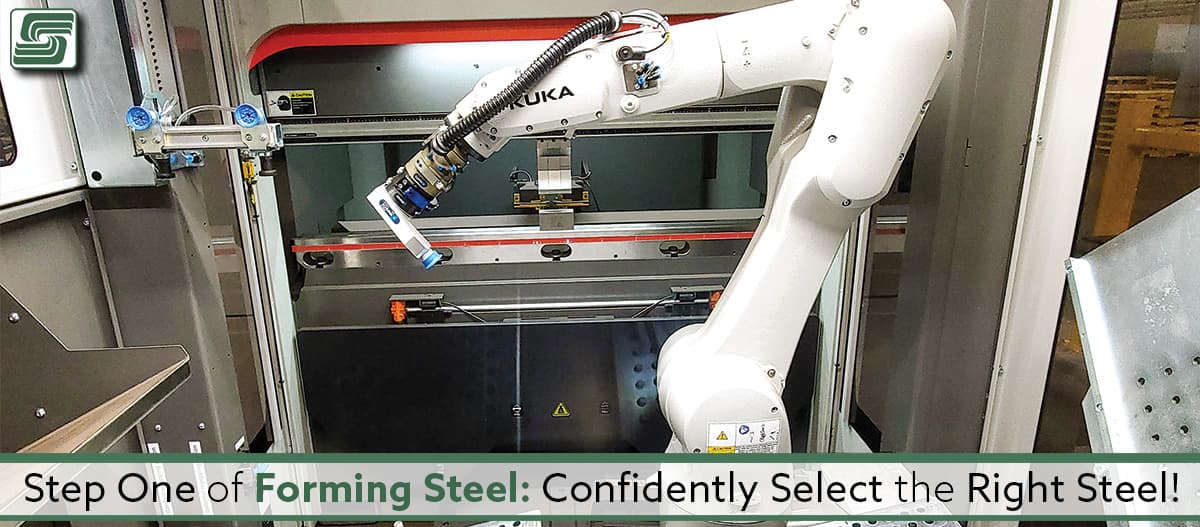
When it comes to manufacturing, the world of steel is dynamic, and it's always changing and adapting to new technologies and innovations. That being said, you'll need to understand the industry before forming steel in your manufacturing process.
Today, we'll discuss key factors you should consider before buying material for forming steel. The type of steel you choose affects your finished product in a variety of ways. For example, certain types of steel are more effective for specific applications.
This blog post illustrates the wide variety of considerations when ordering available steel. Familiarizing yourself with the following information helps you make an informed decision before making large purchases of material before forming steel.
What "Version" to Use When Forming Steel
The first thing you'll need to decide before purchasing steel is the type best suited for your process. The type of steel that you use while forming steel affects the finished product.
For example, Low-Carbon Steel is the market's most commonly used type of steel and is an excellent choice for manufacturing equipment and structures. Forged Steel is another common type, and it's used in the manufacturing of springs and hammers. You'll need to keep all this in mind as you purchase steel. Choosing the correct type of steel is an important first step before forming steel during your manufacturing process.
Strength and durability
When ordering steel, consider the strength and durability of the type chosen. The type of steel used directly impacts the end product. For example, Carbon Steel is strong and durable, making it great for various applications.
However, carbon steel is not the best option if trying to create a highly polished product. While Stainless Steel is not as strong as carbon steel, it has a higher durability level. Stainless steel is the better choice if using a fabricated product used in a wet environment.
Ductility and Malleability
Next, consider the ductility and malleability of the steel. Ductility refers to the level of flexibility in the steel, and Malleability refers to the ability to be hammered without breaking. Ductility and malleability are essential when manufacturing tools and parts with intricate designs—you don't want your items to break when used.
An example of an industrial application requiring a high malleability is a wrench: it must be able to bend without breaking. A great example of an application requiring a high ductility level is a long wire. The wire must be able to bend without snapping or kinking.
Weight
The steel's weight also needs consideration. The weight of the steel used impacts the finished product. For example, a lighter piece of equipment makes it more versatile to move around. A heavier piece of equipment, on the other hand, is more stable and can withstand more force.
Metallurgy and Quality
You'll also need to consider the metallurgy and quality of the steel. Metallurgy refers to the percentage of distinct elements found in the steel. Quality of the steel refers to the overall makeup of the steel itself. For example, look for manufactured high-quality steel containing minimal defects, ensuring the finished product has reduced chances of breaking.
A high-quality piece of steel is more expensive than a low-quality piece. However, a high-quality piece of steel is more reliable and lasts significantly longer than lower-quality steel.
Company Reputation
Consider the company's reputation of the steel you choose. The company's reputation gives insight into the steel quality received. For example, be confident you'll receive quality steel when ordering from a company with an excellent reputation.
A company with an excellent reputation will have a long list of satisfied customers vouching for the finished product quality. For added peace of mind, consider ordering a certified steel type.
ROI and TCO
Next, you'll need to consider the ROI and TCO of the steel you choose. The Return on Investment (ROI) refers to how quickly the initial investment is paid back. The Total Cost of Ownership (TCO) refers to the total amount spent on the product's life. Ideally, choose a steel with a high ROI and a low TCO.
Environmental Impact
Finally, consider the environmental impact of the steel. When purchasing steel, remember that it has a negative environmental impact. However, there are ways of reducing steel's negative impact. One such is choosing recycled and manufactured steel with sustainable practices. Selecting steel manufactured using sustainable practices is the responsible thing to do, and it helps reduce the negative impact of steel on the environment.
It is important to keep in mind that a wide variety of steel types are available on the market today. Keep these factors in mind when purchasing steel.
In Sum
When purchasing steel, remember that it's a dynamic industry that constantly changes and adapts to new technologies and innovations. Keep a few key factors in mind when purchasing steel:
- The type of steel best suited for your manufacturing process
- Consider the steel's strength and durability
- Study the steel's metallurgy and quality
- Review the reputation of the steel manufacturing company
When you keep these factors in mind, you'll be able to select the perfect type of steel for your next project.